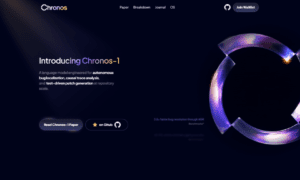Application development, deployment, and management have undergone transformative changes in the rapidly evolving landscape of cloud computing and microservice architectures. Central to this transformation is cloud-native operations and observability, which ensure applications’ reliability, scalability, and performance. These innovations are crucial in navigating the complexities of modern, distributed systems and driving business value through enhanced operational efficiency and innovation. This article will help you explore the recent advancements in cloud computing.
The Rise of Cloud-Native Architectures
The demand for faster, flexible software development drives the shift to cloud-native architectures. According to CNCF, 85% of organizations are adopting microservices. This modular approach enhances agility and efficiency, transforming software deployment and making organizations more adaptable and competitive in the digital age.
However, managing and troubleshooting these distributed systems pose significant challenges. Traditional monitoring methods, which rely on disparate tools and limited visibility, fall short in this context. This is where cloud-native observability comes into play, offering comprehensive insights into system operations and behaviors.
Key Components of Cloud-Native Observability
The key elements include logging, metrics, and distributed tracing tracks.
Logging involves creating detailed records of system events and activities, which allow operators to trace the flow of operations and identify anomalies. Given the vast amount of log data generated daily, sophisticated log management systems are essential for enabling centralized collection, indexing, and real-time analysis.
While, metrics provide quantitative data on system performance, resource utilization, and user behavior. Implementing an effective metrics monitoring infrastructure, often using tools like Prometheus and Graphite, supports proactive performance management and capacity planning.
Finally, distributed tracing tracks the journey of requests through various microservices, pinpointing latency issues and improving service interactions. Open-source tools such as Jaeger and Zipkin, which adhere to the OpenTracing standard, facilitate the implementation of distributed tracing across diverse environments.
The CNCF’s study highlights the benefits of mature observability practices, with organizations experiencing 43% fewer production issues and a 64% reduction in the mean time to resolution (MTTR).
Automation in Cloud-Native Operations
Automation is a cornerstone of cloud-native operations, streamlining processes such as provisioning, scaling, and recovery. Infrastructure as Code (IaC) tools like Terraform and Ansible enable declarative resource management, ensuring consistency and repeatability across environments.
Continuous Integration/Continuous Deployment (CI/CD) pipelines automate the software delivery process, facilitating rapid and reliable application updates. Organizations with mature CI/CD practices deploy code 46 times more frequently and have significantly shorter lead times from commit to deployment. Additionally, automated incident response and recovery mechanisms, exemplified by practices like Chaos Engineering, enhance system resilience by proactively identifying and addressing potential vulnerabilities.
Container Orchestration with Kubernetes
Kubernetes has emerged as the de facto standard for container orchestration, managing, scaling, and scheduling containerized workloads in cloud-native environments. Its declarative approach, leveraging YAML or JSON manifests, abstracts underlying infrastructure complexities, allowing developers to focus on application logic while ensuring high availability and scalability.
Kubernetes’ horizontal pod autoscaling (HPA) dynamically adjusts application scale based on real-time metrics, accommodating varying traffic loads without human intervention. For instance, Airbnb leveraged HPA to scale their Kubernetes clusters from 50 to 500 nodes in just 10 minutes, demonstrating the platform’s flexibility and scalability.
The Business Impact of Cloud-Native Practices
The adoption of advanced cloud-native techniques has tangible business benefits. A study by Google Cloud and Harvard Business Review found that organizations leveraging these practices saw a 23% increase in revenue growth and a 38% reduction in time to market compared to their peers. These metrics underscore the role of cloud-native observability and operations in driving business value and fostering innovation.
Overcoming Challenges in Cloud-Native Adoption
Despite the benefits, implementing cloud-native observability and operations is not without challenges. Organizations often face hurdles such as complexity, skill gaps, and security concerns. Addressing these issues requires investment in the right tools, methodologies, and talent development. Fostering a culture of automation, collaboration, and continuous improvement is essential for successful adoption.
To conclude, in the digital age, cloud-native operations and observability are indispensable for building and managing resilient, scalable applications. By embracing these practices, businesses can unlock the full potential of cloud computing, enhancing application performance, reliability, and innovation. Sailesh Oduri’s extensive research and real-world implementations have significantly advanced the field, contributing to the development of resilient and scalable applications in the digital era.
Read More From Techbullion And Businesnewswire.com



































